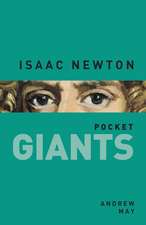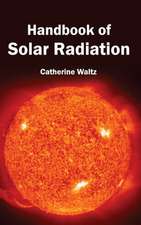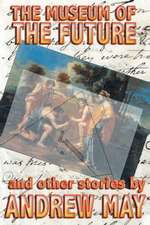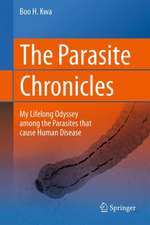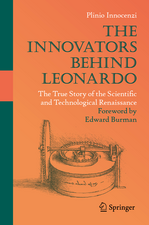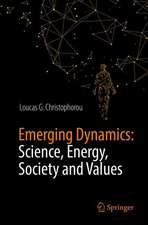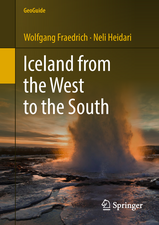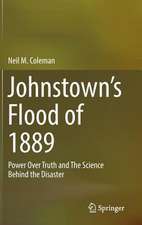Rockets and Ray Guns: The Sci-Fi Science of the Cold War: Science and Fiction
Autor Andrew Mayen Limba Engleză Paperback – 5 iun 2018
Sometimes reality lived up to the SF vision, at other times it didn’t. The hydrogen bomb was as terrifyingly destructive as anything in fiction, while real-world lasers didn't come close to the promise of the classic SF ray gun. Nevertheless, when the scientific Cold War culminated in the Strategic Defence Initiative of the 1980s, it was so science-fictional in its aspirations that the media dubbed it “Star Wars”.
This entertaining account, offering a plethora of little known facts and insights from previously classified military projects, shows how the real-world science of the Cold War followed in the footsteps of SF – and how the two together changed our perception of both science and scientists, and paved the way to the world we live in today.
Din seria Science and Fiction
-
 Preț: 129.05 lei
Preț: 129.05 lei -
 Preț: 104.10 lei
Preț: 104.10 lei -
 Preț: 103.05 lei
Preț: 103.05 lei -
 Preț: 104.92 lei
Preț: 104.92 lei - 5%
 Preț: 102.99 lei
Preț: 102.99 lei -
 Preț: 105.96 lei
Preț: 105.96 lei -
 Preț: 212.63 lei
Preț: 212.63 lei -
 Preț: 162.50 lei
Preț: 162.50 lei -
 Preț: 146.18 lei
Preț: 146.18 lei - 5%
 Preț: 218.95 lei
Preț: 218.95 lei -
 Preț: 128.64 lei
Preț: 128.64 lei -
 Preț: 150.92 lei
Preț: 150.92 lei -
 Preț: 115.46 lei
Preț: 115.46 lei -
 Preț: 111.50 lei
Preț: 111.50 lei -
 Preț: 101.01 lei
Preț: 101.01 lei -
 Preț: 103.91 lei
Preț: 103.91 lei -
 Preț: 337.51 lei
Preț: 337.51 lei -
 Preț: 131.12 lei
Preț: 131.12 lei -
 Preț: 141.41 lei
Preț: 141.41 lei -
 Preț: 484.79 lei
Preț: 484.79 lei -
 Preț: 182.09 lei
Preț: 182.09 lei -
 Preț: 106.14 lei
Preț: 106.14 lei -
 Preț: 183.84 lei
Preț: 183.84 lei -
 Preț: 109.86 lei
Preț: 109.86 lei -
 Preț: 207.39 lei
Preț: 207.39 lei -
 Preț: 72.68 lei
Preț: 72.68 lei -
 Preț: 148.46 lei
Preț: 148.46 lei -
 Preț: 154.46 lei
Preț: 154.46 lei -
 Preț: 146.58 lei
Preț: 146.58 lei -
 Preț: 179.68 lei
Preț: 179.68 lei -
 Preț: 184.72 lei
Preț: 184.72 lei -
 Preț: 149.48 lei
Preț: 149.48 lei -
 Preț: 133.99 lei
Preț: 133.99 lei -
 Preț: 149.45 lei
Preț: 149.45 lei -
 Preț: 128.86 lei
Preț: 128.86 lei -
 Preț: 146.36 lei
Preț: 146.36 lei -
 Preț: 152.76 lei
Preț: 152.76 lei - 20%
 Preț: 225.94 lei
Preț: 225.94 lei -
 Preț: 214.22 lei
Preț: 214.22 lei -
 Preț: 190.49 lei
Preț: 190.49 lei -
 Preț: 168.11 lei
Preț: 168.11 lei -
 Preț: 174.83 lei
Preț: 174.83 lei -
 Preț: 111.33 lei
Preț: 111.33 lei -
 Preț: 183.23 lei
Preț: 183.23 lei -
 Preț: 147.28 lei
Preț: 147.28 lei -
 Preț: 173.75 lei
Preț: 173.75 lei
Preț: 147.23 lei
Nou
Puncte Express: 221
Preț estimativ în valută:
28.17€ • 29.49$ • 23.45£
28.17€ • 29.49$ • 23.45£
Carte disponibilă
Livrare economică 10-24 martie
Preluare comenzi: 021 569.72.76
Specificații
ISBN-13: 9783319898292
ISBN-10: 3319898299
Pagini: 195
Ilustrații: VI, 214 p. 55 illus., 36 illus. in color.
Dimensiuni: 155 x 235 x 15 mm
Greutate: 0.32 kg
Ediția:1st ed. 2018
Editura: Springer International Publishing
Colecția Springer
Seria Science and Fiction
Locul publicării:Cham, Switzerland
ISBN-10: 3319898299
Pagini: 195
Ilustrații: VI, 214 p. 55 illus., 36 illus. in color.
Dimensiuni: 155 x 235 x 15 mm
Greutate: 0.32 kg
Ediția:1st ed. 2018
Editura: Springer International Publishing
Colecția Springer
Seria Science and Fiction
Locul publicării:Cham, Switzerland
Cuprins
The Super-Bomb.- Journey into Space.- Electronic Brains.- Star Wars.- Mind Games.- Weird Science.- Future Shock.
Recenzii
“This slender paperback explores the contributions to fiction and reality by prescient novelists such as H. G. Wells, who foresaw atomic weapons in the early 20th century even as physicists were decoding the structure of the atom. … May alludes to several classic books, TV shows, and movies to illustrate the links between science and the intriguing and astounding predictions of fiction. Each chapter has references and pictures that edify the text. Summing Up: Recommended. All readers.” (N. Sadanand, Choice, Vol. 56 (5), January 2019)
“In Rockets and Rayguns, Andrew May draws on the parallels between reality and fiction, each influencing the other. … A solid contribution to the history of science fiction and its relation to the real world, alongside a reminder of Cold War technologies that now seem like something from a very distant past.” (Popular Science, popsciencebooks.blogspot.com, July, 2018)
“This is an entertaining and enlightening read for anyone with an interest in science, technology and space exploration. The author’s extensive knowledge and multi-disciplinary approach to his subject matter is a refreshing change from the dry histories of the Cold War that concentrate upon the military, economic and political factors but often ignore the role of human imagination. The book is illustrated with pulp magazine and pop culture imagery.” (David Clarke, Fortean Times, Issue 372, 2018)
“This book will appeal to a broad audience of specialist historians of ideas, social science, and politics as well as to students in a wide range of fields. It also serves as a model for revisiting many other partnerships in the history of social science, where mutual collaboration has been put in the shade by falsely aggrandizing searches for individual ‘greatness.’” (E. Stina Lyon, Serendipities, Vol. 3 (1), 2018)
Notă biografică
Andrew May obtained a PhD in astrophysics from the University of Manchester in 1982 and is an experienced and versatile professional, with a career spanning academia, government and private industry. Since the start of 2011 he has been working as a freelance writer and defence consultant. He has a wide range of interests and has written both authoritatively and entertainingly on the physical sciences, military technology, British history, science fiction, New Age beliefs and the paranormal.
He has recently published Pseudoscience and Science Fiction (2017) and The Telescopic Tourist's Guide to the Moon (2017) with Springer.
He has recently published Pseudoscience and Science Fiction (2017) and The Telescopic Tourist's Guide to the Moon (2017) with Springer.
Textul de pe ultima copertă
The Cold War saw scientists in East and West racing to create amazing new technologies, the like of which the world had never seen. Yet not everyone was taken by surprise. From super-powerful atomic weapons to rockets and space travel, readers of science fiction (SF) had seen it all before.
Sometimes reality lived up to the SF vision, at other times it didn’t. The hydrogen bomb was as terrifyingly destructive as anything in fiction, while real-world lasers didn't come close to the promise of the classic SF ray gun. Nevertheless, when the scientific Cold War culminated in the Strategic Defence Initiative of the 1980s, it was so science-fictional in its aspirations that the media dubbed it “Star Wars”.
This entertaining account, offering a plethora of little known facts and insights from previously classified military projects, shows how the real-world science of the Cold War followed in the footsteps of SF – and how the two together changed our perception of both scienceand scientists, and paved the way to the world we live in today.
Sometimes reality lived up to the SF vision, at other times it didn’t. The hydrogen bomb was as terrifyingly destructive as anything in fiction, while real-world lasers didn't come close to the promise of the classic SF ray gun. Nevertheless, when the scientific Cold War culminated in the Strategic Defence Initiative of the 1980s, it was so science-fictional in its aspirations that the media dubbed it “Star Wars”.
This entertaining account, offering a plethora of little known facts and insights from previously classified military projects, shows how the real-world science of the Cold War followed in the footsteps of SF – and how the two together changed our perception of both scienceand scientists, and paved the way to the world we live in today.
Caracteristici
Vividly portrays how Science Fiction anticipated many of the key scientific developments of the Cold War Offers a plethora of little known facts and insights from previously classified military projects Shows how Cold War science and related SF changed our perception of science and scientists



